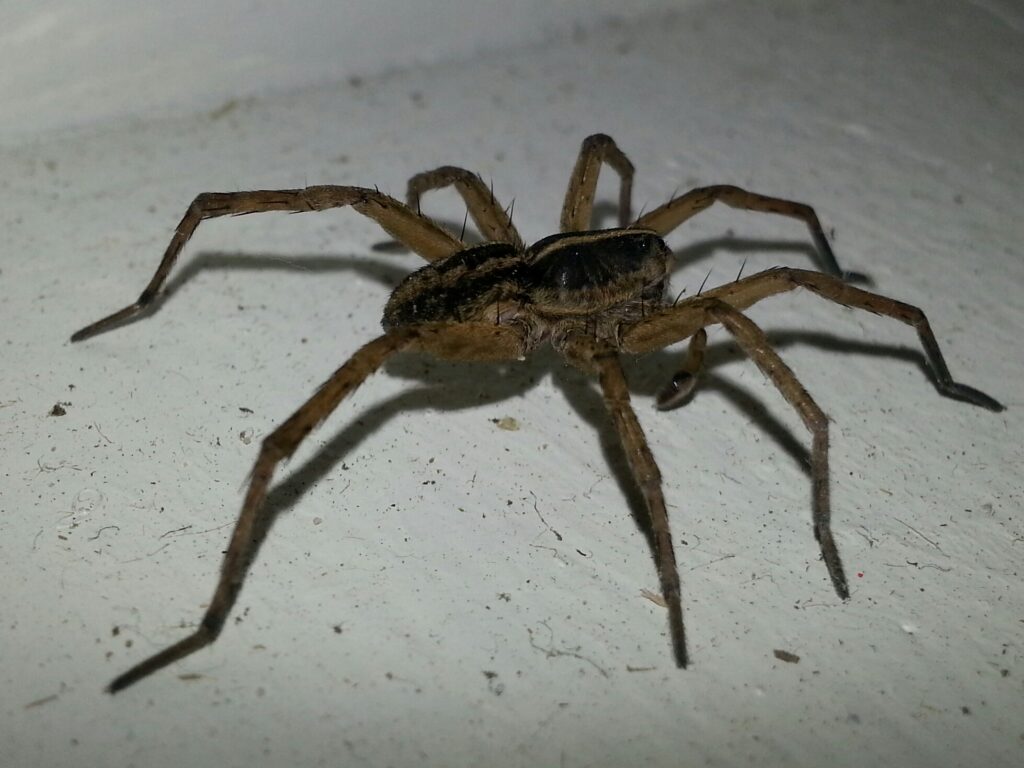 Have you ever wondered why you find unexpected, unwelcome visitors nibbling at your pantry items? The answer might lie in how you manage your food storage. An improperly organized pantry can be an open invitation to mice, transforming your kitchen into a buffet for these stealthy intruders. Leftover crumbs, improperly sealed containers, and easily accessible food packages are some of the common factors that attract mice into homes. These little critters are not only adept at finding food, but also capable of squeezing through incredibly small openings to get to it.
Truly Nolen Canada, with their extensive expertise in dealing with rodent infestations, knows all too well the consequences of ignoring these signs. Mouse droppings in the kitchen are more than just an unsightly mess; they indicate a potential health risk: So, do field mice carry diseases?
In this guide, we'll explore how your pantry might be inviting mice in and provide practical tips to safeguard your home against these pesky visitors. Keep in mind, a well-maintained pantry is not just essential for keeping your food fresh, but also for ensuring a mouse-free environment. Food for thought, right?
Have you ever wondered why you find unexpected, unwelcome visitors nibbling at your pantry items? The answer might lie in how you manage your food storage. An improperly organized pantry can be an open invitation to mice, transforming your kitchen into a buffet for these stealthy intruders. Leftover crumbs, improperly sealed containers, and easily accessible food packages are some of the common factors that attract mice into homes. These little critters are not only adept at finding food, but also capable of squeezing through incredibly small openings to get to it.
Truly Nolen Canada, with their extensive expertise in dealing with rodent infestations, knows all too well the consequences of ignoring these signs. Mouse droppings in the kitchen are more than just an unsightly mess; they indicate a potential health risk: So, do field mice carry diseases?
In this guide, we'll explore how your pantry might be inviting mice in and provide practical tips to safeguard your home against these pesky visitors. Keep in mind, a well-maintained pantry is not just essential for keeping your food fresh, but also for ensuring a mouse-free environment. Food for thought, right?
Why Mice Target Pantries
Why do mice find their way into our homes and, more specifically, our pantries? The answer lies in their relentless search for both nourishment and shelter. Mice are opportunistic feeders, drawn to any easily accessible food sources. Our pantries, often filled with a variety of conveniently stored items, become prime targets. The scent of grains, cereals, and sweets can attract these tiny foragers, who are experts at sniffing out anything edible. The types of food that most attract mice include high-energy items like seeds, nuts, and grains. Fresh produce and leftovers can also lure them in. But it’s not just about what we store; how we store it plays a significant role. Poorly sealed containers and loosely packed shelves can make it easier for mice to feast unnoticed. Additionally, pantries provide the added benefit of shelter. They offer plenty of nooks and crannies where mice can nest and reproduce, often without being disturbed. The warmth and relative quiet of a pantry can be an ideal breeding ground, exacerbating the problem.Signs of a Mouse Infestation in Your Pantry
Spotting the warning signs early can save us a lot of hassle and help maintain a safe and healthy home environment. Let's discuss the most common indicators, focusing particularly on droppings, gnaw marks, and the subtle noises these critters make. Firstly, finding droppings is one of the most telling signs of an infestation. These small, dark pellets are often found near food sources and nesting areas. The presence of droppings should prompt us to look further for additional evidence. Gnaw marks are another clear indicator. Mice have a constant need to chew to keep their teeth sharp and manageable, leaving behind distinctive marks on packaging, wooden structures, and even electrical wiring. In addition to visual clues, we should also pay attention to sounds. Mice are nocturnal and make scurrying noises or soft squeaks, particularly during the night. These sounds may come from walls, ceilings, or behind appliances, suggesting they are trying to access hidden areas. Addressing the potential health risks associated with these rodents is crucial. Droppings can contaminate our food and surfaces, posing significant health hazards. Diseases such as hantavirus, leptospirosis, and salmonella can be carried and spread through these waste products, leading to severe illnesses if not managed properly.How Your Pantry Setup Can Invite Mice
If you've ever wondered how those little invaders make their way into your neatly kept home, the answer might be hiding in plain sight. Let's take a closer look at some common mistakes we might be making in our pantry setup, and how simple tweaks can considerably reduce the risk of an infestation. One major oversight many of us make is choosing the wrong type of containers. Those flimsy plastic bags and cardboard boxes are no match for determined invaders. Opting for sturdy, airtight containers can make a world of difference. Not only do these containers keep our food fresh, but they also act as a strong deterrent against these pests who might otherwise enjoy an easy snack. Clutter is another culprit that we might not immediately think of. An overcrowded pantry with items haphazardly stacked provides ample hiding spots. Organizing our shelves, ensuring each item has its place, and frequently clearing out expired goods can help maintain a neat environment that is less inviting to uninvited guests. Of course, cleanliness is key. Regularly wiping down surfaces, sweeping up crumbs, and ensuring spills are promptly cleaned can prevent the subtle smell trails that attract intruders. We might also consider setting traps and using natural repellents, like peppermint oil, as additional proactive measures. By making these straightforward organizational changes, we can greatly reduce the likelihood of having to deal with an unwanted infestation. A well-maintained pantry isn't just about aesthetics or convenience; it's a crucial step in upholding our home’s overall health and hygiene.
Preventive Measures to Protect Your Pantry
To ensure our homes remain free from these unwelcome guests, we need to adopt some key preventive measures. By following a few practical steps, we can make our pantry far less inviting to mice and safeguard our homes against potential health risks.- Proper Food Storage
One of the most important steps is proper food storage. We should always store our food in sturdy, airtight containers. These containers not only preserve freshness but also prevent access to potential food sources for rodents. Investing in heavy-duty plastic or glass containers can be a game-changer in keeping pests at bay.
- Regular Cleaning Schedules
Maintaining a regular cleaning schedule is equally crucial. It's essential to frequently wipe down surfaces, sweep away crumbs, and promptly clean any spills. Keeping the area spotless reduces scent trails that might attract pests. Creating a weekly or bi-weekly cleaning routine can make a significant difference in maintaining a clean environment that is less appealing to unwanted visitors.
- Sealing Entry Points
Another critical measure is sealing any potential entry points. Mice can squeeze through incredibly small gaps, so we need to be thorough. Inspecting and sealing cracks, holes, and gaps around the pantry, windows, doors, and even utility lines can block off easy access routes. Using materials like steel wool or caulk is effective in keeping these critters out.
- Reducing Clutter
Clutter provides hiding spots and nesting areas for rodents. We should strive to keep our pantry well-organized, avoiding haphazard stacking of items. Regularly decluttering and ensuring everything has its designated place can help prevent these pests from finding comfortable spots to settle. It also makes it easier for us to spot any signs of infestation early.
- Additional Proactive Measures
We can also take extra steps like setting traps and using natural repellents. For instance, peppermint oil is known to be a natural deterrent for mice. Placing a few drops around the pantry area can further discourage these pests from making an appearance.
What to Do If You Find Mice in Your Pantry
Discovering evidence of an infestation can be quite alarming, but quick and decisive action can help mitigate the problem. Here’s what we need to do if we find unwelcome guests in our pantry.- Cleaning Up Safely
First and foremost, it's essential to manage droppings and any contaminated surfaces safely. Wearing gloves and a mask, we should clean droppings with a disinfectant or a mixture of bleach and water, ensuring we avoid creating dust that could be hazardous. It’s important to dispose of cleaning materials in tightly sealed bags to avoid further contamination.
- Addressing the Source
Next, we must identify and address the source of the issue. Inspect every inch of the pantry and surrounding areas to locate entry points. Sealing these gaps with materials like steel wool or caulk will help prevent further invasions. This thorough inspection also ensures we don't miss potential nesting spots.
- Setting Up Traps
Setting traps is another effective method. We can place these along walls and in corners where activity is suspected. Using a variety of traps, like snap traps or electronic ones, can increase our chances of success. Remember to check them regularly and dispose of any caught intruders promptly.
- Calling Professional Help
If the issue persists, consulting pest control professionals is a wise step. Truly Nolen Canada, for instance, offers expert services designed to eliminate these pests safely and effectively. Their comprehensive approach includes baiting and exclusion techniques, ensuring that not only are the intruders removed, but their return is prevented.

